1 hr, 3.0 kms
Tudma is actually the beginning of a "Valley Civilization", a stretch of valley several kilometres long, with scatterings of houses and hamlets along the slopes along with orchards and cultivated plots
. There really isn't any flat fertile lowland. Instead, in this region people have carved out thousands of terraces into the sides of the mountains. I’ve never seen terracing to this extent outside of the Far East. And what’s mind boggling about this area is that these are not gentle, fertile slopes—these hillsides are often 70% rock… so you’ve got to be really determined if you expect to grow your food here.
Of course, not all of this part of Morocco is that rugged. To the north of here are the plains of Biougra and Taraoudant, a vast, flat, well irrigated area. To the west is Tiznit, another flat agricultural area. Which makes me wonder… why would people choose to move here and try to live off such a rocky terrain?
Later I ask people about it, but can’t really get a clear answer. My theory is that, back in the day, there were constant conflicts in the plains between different Berber tribes and between Arabs and Berbers. At some point these people decided it was better to just get out of there and come here where nobody would want to invade them—as there’s nothing here that would tempt lowlanders, used to a much easier life, to want to try and invade… Not to mention that the narrow gorges you have to follow to get here would be easy to defend against invaders
.
Perhaps they started out as herdsmen, and gradually, painstakingly began to cut out these terraces in the mountainside using basic tools. They earned the right to live here through sweat and tears. But even that wasn’t enough. During dry years there simply isn’t enough water for their crops, no matter how hard they worked to make this land cultivatable.
Necessity became the mother of invention, and now these people are using their same skills and determination to prosper in the cities.
I ponder on this as I follow paths down to the bottom of the valley and up the other side. The path disappears and I have to climb up terrace by terrace, sometimes blocked by overgrowth. Many of these plots are still being cultivated—although the only people I see working are construction workers, building yet more big summer homes for the natives who have made their fortunes in the cities.
At the far end of the valley there’s one empty hamlet right at the base of a cliff that entices me for a closer look… and I decide to count it as another “town”, even though I don’t see anybody home.
1503. Why would people want to live here?
Tuesday, March 19, 2013
 Anamr, Souss-Massa-Drâa, Morocco
Anamr, Souss-Massa-Drâa, Morocco
Other Entries
-
991470. Another Waterfall
Feb 2027 days prior Tifrit, Moroccophoto_camera18videocam 0comment 1
Tifrit, Moroccophoto_camera18videocam 0comment 1 -
1001487. A Magical Swimming Hole
Feb 2126 days prior Taghrat, Moroccophoto_camera64videocam 0comment 0
Taghrat, Moroccophoto_camera64videocam 0comment 0 -
1011488. The End of Paradise Valley
Feb 2126 days prior Tamzargout, Moroccophoto_camera11videocam 0comment 0
Tamzargout, Moroccophoto_camera11videocam 0comment 0 -
1021489. Connecting with the Agadir Superhike
Feb 2126 days prior Elma, Moroccophoto_camera4videocam 0comment 0
Elma, Moroccophoto_camera4videocam 0comment 0 -
103Ait Mellioul Post-visit: Connecting Elkolea
Feb 2225 days prior Ait Mellioul, Moroccophoto_camera0videocam 0comment 0
Ait Mellioul, Moroccophoto_camera0videocam 0comment 0 -
104Post-visit: Back to my Cocoon
Feb 2225 days prior Ben Sergao, Moroccophoto_camera4videocam 0comment 0
Ben Sergao, Moroccophoto_camera4videocam 0comment 0 -
1051492. Back in Morocco’s Rock Wonderland
Feb 2621 days prior Aguerd n’Doudad, Moroccophoto_camera43videocam 0comment 0
Aguerd n’Doudad, Moroccophoto_camera43videocam 0comment 0 -
1061493. The Painted Rocks
Feb 2621 days prior Tarharat, Moroccophoto_camera39videocam 0comment 0
Tarharat, Moroccophoto_camera39videocam 0comment 0 -
1071494. An A Tough Place to Live
Feb 2621 days prior Aït Daoud Ou Afa, Moroccophoto_camera6videocam 0comment 0
Aït Daoud Ou Afa, Moroccophoto_camera6videocam 0comment 0 -
1081495. A Tempting Side Trip
Feb 2621 days prior Dousdremt, Moroccophoto_camera9videocam 0comment 0
Dousdremt, Moroccophoto_camera9videocam 0comment 0 -
1091496. Singing to the Goats
Feb 2621 days prior Aousift, Moroccophoto_camera11videocam 0comment 0
Aousift, Moroccophoto_camera11videocam 0comment 0 -
1101497. The Last House on the Cliffside
Feb 2720 days prior Tasga n’Toudma, Moroccophoto_camera17videocam 0comment 0
Tasga n’Toudma, Moroccophoto_camera17videocam 0comment 0 -
1111498. Daring to Scale the Boulders
Feb 2720 days prior Tazoult, Moroccophoto_camera32videocam 0comment 0
Tazoult, Moroccophoto_camera32videocam 0comment 0 -
1121499. I’ll be Back
Feb 2720 days prior Taddart, Moroccophoto_camera13videocam 0comment 0
Taddart, Moroccophoto_camera13videocam 0comment 0 -
1131500. Unable to Wait
Mar 19earlier that day Idaougdinif, Moroccophoto_camera15videocam 0comment 0
Idaougdinif, Moroccophoto_camera15videocam 0comment 0 -
1141501. An Irresistable Gorge
Mar 19earlier that day Amezdou Khsane, Moroccophoto_camera22videocam 0comment 0
Amezdou Khsane, Moroccophoto_camera22videocam 0comment 0 -
1151502. Discovering a Waterfall
Mar 19earlier that day Tudma, Moroccophoto_camera18videocam 0comment 0
Tudma, Moroccophoto_camera18videocam 0comment 0 -
1161503. Why would people want to live here?
Mar 19 Anamr, Moroccophoto_camera31videocam 0comment 0
Anamr, Moroccophoto_camera31videocam 0comment 0 -
1171504. Hike through Middle Earth
Mar 19later that day Fasaoun, Moroccophoto_camera25videocam 0comment 0
Fasaoun, Moroccophoto_camera25videocam 0comment 0 -
1181505. No food, no lodging
Mar 19later that day Tagadirt, Moroccophoto_camera8videocam 0comment 0
Tagadirt, Moroccophoto_camera8videocam 0comment 0 -
1191506. Berber-Rock Jam Session
Mar 201 day later Tanalt, Moroccophoto_camera12videocam 0comment 0
Tanalt, Moroccophoto_camera12videocam 0comment 0 -
1201507. Another Valley Civilization
Mar 201 day later Tissi, Moroccophoto_camera7videocam 0comment 0
Tissi, Moroccophoto_camera7videocam 0comment 0 -
1211508. Houses in the Clouds
Mar 201 day later Igherm, Moroccophoto_camera20videocam 0comment 0
Igherm, Moroccophoto_camera20videocam 0comment 0 -
1221509. Cliffside Market Village
Mar 201 day later Foughalt, Moroccophoto_camera15videocam 0comment 0
Foughalt, Moroccophoto_camera15videocam 0comment 0 -
1231510. Top of the Pass Village
Mar 201 day later Tililan, Moroccophoto_camera15videocam 0comment 0
Tililan, Moroccophoto_camera15videocam 0comment 0 -
1241512. Back in the Ameln Valley
Mar 201 day later Ait Talb, Moroccophoto_camera10videocam 0comment 0
Ait Talb, Moroccophoto_camera10videocam 0comment 0 -
1251511. A Super-shortcut
Mar 201 day later Tagmout, Moroccophoto_camera2videocam 0comment 0
Tagmout, Moroccophoto_camera2videocam 0comment 0 -
1261513. Wandering the Oasis
Mar 201 day later Anamr, Moroccophoto_camera9videocam 0comment 0
Anamr, Moroccophoto_camera9videocam 0comment 0 -
1271514. Back to Civilization
Mar 201 day later Tamaloukt, Moroccophoto_camera5videocam 0comment 0
Tamaloukt, Moroccophoto_camera5videocam 0comment 0 -
1281515. Up the Tafraoute Valley
Mar 212 days later Tahala, Moroccophoto_camera8videocam 0comment 0
Tahala, Moroccophoto_camera8videocam 0comment 0 -
1291516. Beginning of the Rock Formations
Mar 212 days later Boutabia, Moroccophoto_camera16videocam 0comment 0
Boutabia, Moroccophoto_camera16videocam 0comment 0 -
1301517. The Giant Heads
Mar 212 days later Aday, Moroccophoto_camera29videocam 0comment 0
Aday, Moroccophoto_camera29videocam 0comment 0 -
131Post-visit (0096) A Classy Finish
Mar 212 days later Tafraoute, Moroccophoto_camera31videocam 0comment 0
Tafraoute, Moroccophoto_camera31videocam 0comment 0 -
1321518. Back up to the Rif (Mor 514)
May 0143 days later Tala Lakran, Moroccophoto_camera20videocam 0comment 0
Tala Lakran, Moroccophoto_camera20videocam 0comment 0 -
1331519. The Two Sides of the Straits of Gibraltar
May 0143 days later Oued Aliane, Moroccophoto_camera11videocam 0comment 0
Oued Aliane, Moroccophoto_camera11videocam 0comment 0 -
134Post-visit: Ksar Sghir (0341) This Ancient Port
May 0143 days later Ksar es Sghir, Moroccophoto_camera27videocam 0comment 0
Ksar es Sghir, Moroccophoto_camera27videocam 0comment 0

 Anamr, Souss-Massa-Drâa, Morocco
Anamr, Souss-Massa-Drâa, Morocco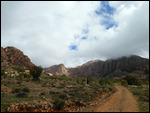
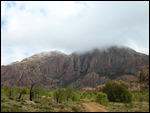

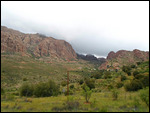
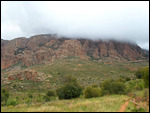
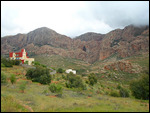
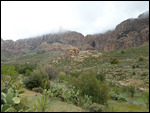
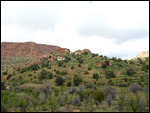
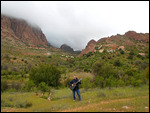
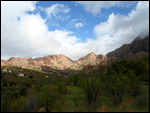

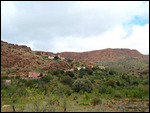
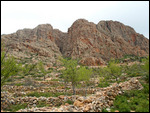
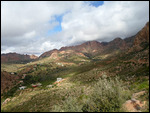
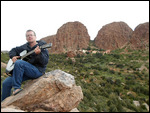
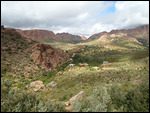
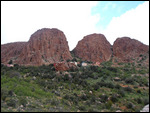
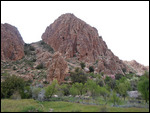
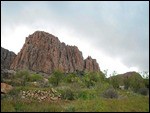
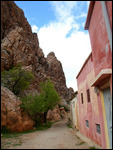
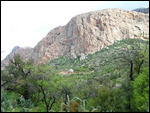

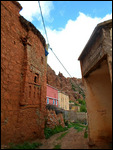

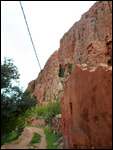
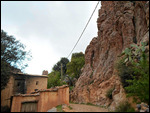
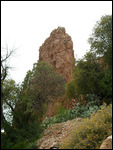

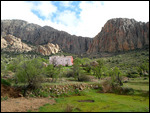
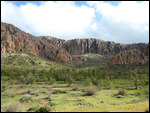
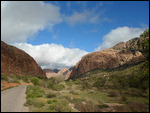
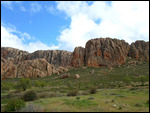
2025-05-23